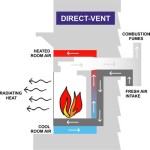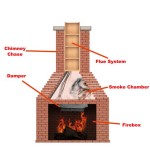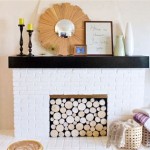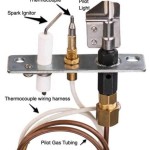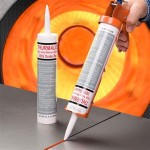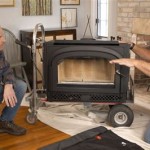Gas Fireplace Log Set Up: A Comprehensive Guide
Gas fireplace log sets offer a convenient and aesthetically pleasing alternative to traditional wood-burning fireplaces. They provide the ambiance of a real fire without the associated mess, chimney maintenance, and the need for firewood. Setting up a gas log set correctly is crucial for safety, efficiency, and optimal performance. This article provides a comprehensive guide to understanding and implementing the proper installation of gas fireplace log sets.
Before embarking on the installation process, a thorough understanding of the different types of gas log sets and their corresponding vent systems is necessary. Gas log sets are broadly categorized into two main types: vented and vent-free (or ventless). Each type requires a specific installation approach and is subject to different safety regulations. Choosing the appropriate type for the existing fireplace and ensuring compliance with local building codes are paramount.
Understanding Vented and Vent-Free Gas Log Sets
Vented gas log sets are designed to operate with the fireplace damper open, allowing combustion gases to escape through the chimney. They produce a more realistic flame appearance and higher heat output. However, due to the open damper, a significant portion of the heat generated is lost up the chimney, resulting in lower overall efficiency. Vented log sets should only be installed in fireplaces that have a functional chimney capable of safely venting combustion byproducts.
Vent-free gas log sets, on the other hand, are designed to burn cleanly enough to be used without a chimney. They are equipped with an Oxygen Depletion Sensor (ODS) that shuts off the gas supply if the oxygen level in the room drops to an unsafe level. Vent-free log sets are more energy-efficient because they radiate heat directly into the room. However, they may produce a slight odor during operation, and some individuals may be more sensitive to their exhaust. Vent-free log sets should only be installed in well-ventilated rooms and in accordance with the manufacturer's instructions and local regulations.
The selection between vented and vent-free log sets depends largely on the existing fireplace setup and individual preferences. A professional inspection of the fireplace and chimney is highly recommended before making a decision. This inspection should assess the chimney's condition, draft capabilities, and compliance with safety standards. Furthermore, it is important to consider the local building codes, which may restrict the installation of certain types of gas log sets based on factors such as room size and ventilation.
Regardless of the type of gas log set chosen, certain general guidelines apply to all installations. These guidelines emphasize safety, proper gas connection, and correct log placement. Neglecting these aspects can lead to hazardous situations, including gas leaks, carbon monoxide poisoning, and potential fire hazards.
Preparing the Fireplace for Gas Log Installation
Before installing a gas log set, the fireplace must be thoroughly cleaned and inspected. Remove all debris, ash, and soot from the firebox and the surrounding area. The firebox should be free of any obstructions that could interfere with the proper operation of the gas log set. Inspect the firebox for cracks or damage. Any structural issues should be addressed before proceeding with the installation.
Check the fireplace damper to ensure it is functioning correctly. For vented log sets, the damper must be able to fully open and close. For vent-free log sets, the damper should be permanently secured in the open position to prevent accidental closure during operation. Most vent-free installations require a damper clamp to keep the damper permanently open.
If the existing fireplace has a gas line, it should be inspected by a qualified professional to ensure it is in good condition and meets the required specifications. The gas line should be properly sized to provide adequate gas flow to the log set. A drip leg should be installed to prevent moisture and debris from entering the gas valve. The gas line should also be equipped with a shut-off valve located outside the firebox for easy access in case of an emergency.
In cases where there is no existing gas line, a new gas line installation will be necessary. This is a complex task that should be performed only by a licensed gas fitter or plumber. The gas line must be installed in accordance with local building codes and safety regulations. Proper grounding and bonding are essential to prevent electrical hazards. A pressure test should be conducted to ensure the gas line is leak-free.
Once the fireplace and gas line are prepared, the installation of the gas log set can begin. This involves connecting the gas log set to the gas supply, positioning the logs according to the manufacturer's instructions, and testing the system for proper operation.
Installing and Testing the Gas Log Set
The gas log set typically comes with a burner pan or grate, which is placed inside the firebox. The gas supply line is connected to the burner pan using appropriate fittings. Ensure all connections are tight and leak-free. Use a gas leak detector solution to check for any leaks around the fittings. If any leaks are detected, tighten the connections or replace the fittings as necessary.
The logs themselves are carefully positioned on the burner pan according to the manufacturer's instructions. Proper log placement is crucial for achieving a realistic flame appearance and ensuring proper combustion. Do not stack the logs too tightly, as this can restrict airflow and lead to incomplete combustion and carbon monoxide production. The logs should be arranged so that the flames are visible and the burner is not obstructed.
After the logs are positioned, the gas log set should be tested to ensure it is operating correctly. Turn on the gas supply and ignite the burner. Observe the flame pattern and adjust the gas flow if necessary. The flames should be blue with yellow tips and should not be excessively large or smoky. Check for any unusual odors or noises. If any problems are detected, shut off the gas supply and consult the manufacturer's instructions or a qualified technician.
For vent-free log sets, it is essential to test the Oxygen Depletion Sensor (ODS) to ensure it is functioning properly. The ODS is designed to shut off the gas supply if the oxygen level in the room drops below a safe level. Follow the manufacturer's instructions for testing the ODS. If the ODS fails to function properly, the gas log set should not be used until it is repaired or replaced.
Once the gas log set is installed and tested, it is important to educate all household members on its safe operation. Explain the proper procedures for turning the gas log set on and off, and emphasize the importance of keeping the area around the fireplace clear of flammable materials. Install carbon monoxide detectors in the vicinity of the fireplace and test them regularly. Schedule regular maintenance and inspections of the gas log set and chimney (for vented sets) to ensure they are functioning properly.
The process of installing a gas fireplace log set requires diligence and attention to detail. While some homeowners may be comfortable performing the installation themselves, it is often advisable to seek the assistance of a qualified professional. A professional installer can ensure that the gas log set is installed safely and correctly, minimizing the risk of accidents and maximizing its performance.

What Are Gas Logs How Do They Work

How To Select And Install A Gas Fireplace Log Set Fireplaces Direct Learning Center

Installing Vent Free Gas Log Set

Vented Gas Logs Heater Or Decorative Bart Fireside

Napoleon Gl18e Vented Gas Log Set 18 Inch

How To Select And Install A Gas Fireplace Log Set Fireplaces Direct Learning Center

American Gas Log Dundee Oak 30 In Vented Natural Fireplace Set With Complete Kit Manual Match Lit Do30hdmtch The Home Depot

How To Install Gas Logs Woodlanddirect Com

Gas Log Setup Installation Service Pros On Call

How Long Do Gas Logs Last To Replace Fireplace
Related Posts

